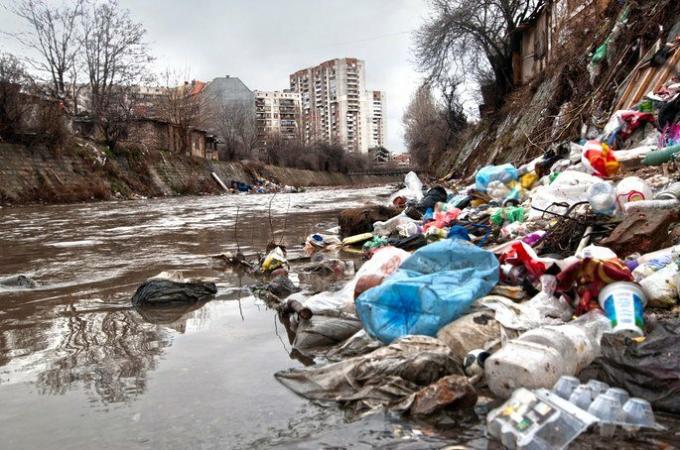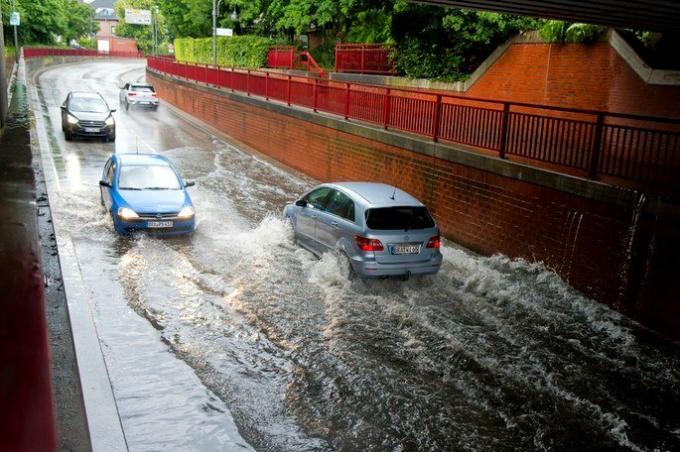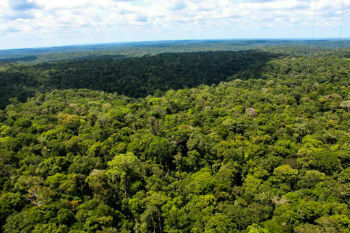Urban environmental problems are environmental challenges that affect urban areas due to population growth, urbanization and human activities concentrated in these regions.
These problems have a significant impact on people's quality of life and the environment. Below are some of the main urban environmental problems.
Air pollution
Pollution is caused by the emission of atmospheric pollutants such as carbon monoxide and carbon dioxide (CO and CO2), sulfur dioxide (SO2), nitrogen oxides (NOx) and other fine particles.
These particles, which come mainly from vehicles and industries, cause health problems, mainly respiratory and even cardiovascular.

Acid rain
Acid rain is one of the main environmental problems in industrialized areas. This occurs when urban pollution mixes with cloud particles, generating acids such as sulfuric and nitric acids. Because they are diluted in water, these acids do not cause damage immediately, but rather in the long term.
The consequences include damage to vegetation, making soil and water in rivers and lakes more acidic, compromising marine and terrestrial biodiversity. Furthermore, it can cause corrosion of statues and historical monuments, in addition to the oxidation of metals and accelerated wear in urban paintings.
Water pollution
The inappropriate discharge of sewage, industrial chemicals and domestic waste into urban waters contaminates rivers, lakes and aquifers, harming aquatic life and the availability of drinking water.
The process of accelerated growth of cities, combined with the lack of public policies for water treatment and environmental education, favors the worsening of the situation.

Floods
Also called floods, these phenomena occur when the amount of water in a river bed increases, causing overflow. In other words, it is when the river or stream exceeds its maximum water capacity.
This phenomenon is similar to flooding, which also frequently occurs on city streets, when the sewage flow is not sufficient on rainy days, causing water to accumulate in the roads urban.

Accumulation of solid waste
Waste production in urban areas tends to be very high, even more so in large cities, overloading waste management systems and leading to irregular waste disposal.
The accumulation of this waste in landfills and dumps causes public health problems and soil and groundwater pollution due to leachate infiltration.
Urban deforestation
Urban deforestation is the removal of wooded areas within urban areas to make way for the development of cities, such as construction of buildings, roads and infrastructure.
This often results in the loss of natural habitats, worsens air quality and can contribute to other environmental problems, such as increased urban flooding and local temperatures.
heat islands
Heat islands are urban areas where the temperature is significantly higher than the surrounding rural areas. This occurs due to the absorption and retention of heat by urban materials, such as concrete and asphalt, in addition to the lack of vegetation.
This phenomenon can increase thermal discomfort, the demand for energy for cooling and health risks. Increased vegetation and sustainable urban planning through reforestation, use of green roofs and construction of parks can help reduce heat island effects.
Thermal inversion
Thermal inversion is an atmospheric phenomenon in which a layer of cold air is trapped in the lower atmosphere, preventing the rise of pollutants and suspended particles in the atmosphere.
This results in a concentration of pollutants close to the surface, which can worsen air quality and cause respiratory and cardiovascular problems in the population living in large cities.
Landslides
Landslides are events in which a large amount of soil and rocks move downhill. This occurs due to intense rains, combined with urban deforestation.
These landslides can be devastating, causing damage to property and human lives. They are more common in mountainous areas and on steep slopes, where the soil is less stable and the slope of the relief favors soil fall.

Read more on the subject:
- Exercises on environmental problems
- Exercises on Urbanization (with answer sheet)
- Main environmental problems
- Environmental problems in Brazil
- Pollution
- Ground pollution
- Environmental disasters in Brazil
- Floods: concept, causes and solutions
- Environmental impacts
- Heat Island
- Types of pollution
- Noise pollution
- Landfill
- Polluted Rivers
- Household Waste
Bibliographic references
LUCCI, Elian Alabi; BRANCO, Anselmo Lazaro; MENDONÇA, Cláudio. Territory and Society in the Globalized World. São Paulo: Saraiva, 2014.
MARQUES, Vinícius. Urban environmental problems: what they are and impacts.All Matter, [n.d.]. Available in: https://www.todamateria.com.br/problemas-ambientais-urbanos/. Access at:
See too
- Exercises on environmental problems
- Greenhouse Effect Exercises
- Pollution
- Types of pollution
- Heat Island
- Exercises on Urbanization (with answer sheet)
- Main environmental problems
- Enem Geography: subjects that fall the most


